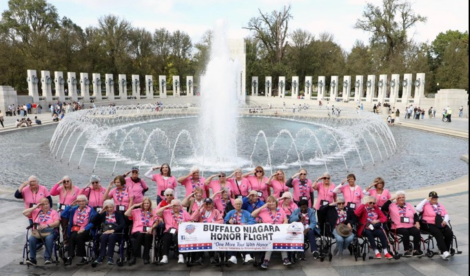Paramedic Salaries Approved For Fly-Car

The County Legislature unanimously approved to set the salaries for senior paramedic and paramedic positions during Wednesday’s meeting. With legislators’ approval, the work begins in a lengthy process to get a fly-car system into operation to support commercial and volunteer services respond to the growing number of calls in the county. The fly-car system also comes amid a decrease in volunteer EMTs. P-J photo by Jimmy McCarthy
MAYVILLE — With the County Legislature’s approval, forming a county-sponsored emergency response team is in motion to support commercial and volunteer services respond to 9-1-1 calls.
During Wednesday’s meeting, legislators unanimously approved to set salary levels for senior paramedic and paramedic positions for the fly-car system that was included in the 2017 budget last month. Legislators approved three fly-cars in the budget as the system will see the hiring of a senior paramedic with a salary in the $38,813-49,878 per year range and three full-time paramedics in the salary range of $35,110-45,011 per year.
Those who are hired to the positions will perform primary emergency medical care and advanced life support to people who suffered physical trauma from injury or illness at the scene. County Executive Vince Horrigan reiterated following the meeting that the fly-car system will work in conjunction with volunteer fire services.
“The fly-car is merely paramedic response on scene. We need our volunteer fire services to partner with us to get people to that hospital after on-scene treatment,” he said. “The legislature approved it and I’m convinced this is a well-thought-out operation. We don’t want to interfere with other paramedic units and response systems like Alstar. That’s why we’re going about this carefully and methodically.”
On top of a senior paramedic and three full-time paramedics, the county will also be looking to hire six part-time paramedics. Legislator Ron Lemon, R-Frewsburg, said it’s wise to support legislation that’s cost effective and meets the needs to keep communities safe.
“It was easy to support because the fire departments are very much in favor of them,” he said. “It will be an asset to the departments that are having trouble getting new members and need more EMTs.”
Moving the system into operation, officials will need to advertise the positions, hire people, purchase and outfit vehicles and determine the areas in which the fly-cars would be stationed. Horrigan and Julius Leone, emergency services director, said they hope to have the fly-car system in operation sometime during the first quarter of 2017.
“We’re working ahead on policies, procedures, ensuring we have the right paramedic supervisor on hand and recruiting the right people,” Horrigan said.
In August, a county-initiated EMS study was released and found that a fly-car system was necessary to handle a rise in 9-1-1 calls, which is largely attributable to the older demographic in the county and a decrease in the number of volunteer EMTs serving the community.
The system is used widely throughout portions of the U.S and Europe. Leone has said the system could initially be available Monday through Saturday from 6 a.m. to 6 p.m., the peak hours that are a challenge to get an EMT or paramedic to the call.
“It’s a commitment for the county to get involved in something that typically we haven’t, but we can no longer ignore the fact that our volunteer fire service across the county is in a situation where we have fewer volunteers,” Horrigan said. “We know that critical access to emergency medical care is the most important thing that we need to do in this county.”




